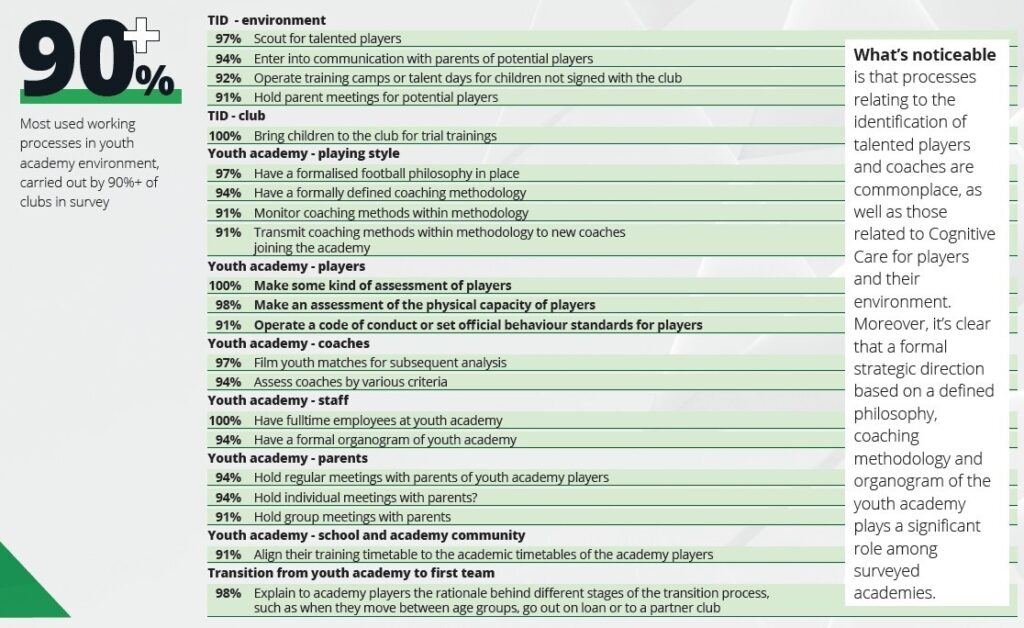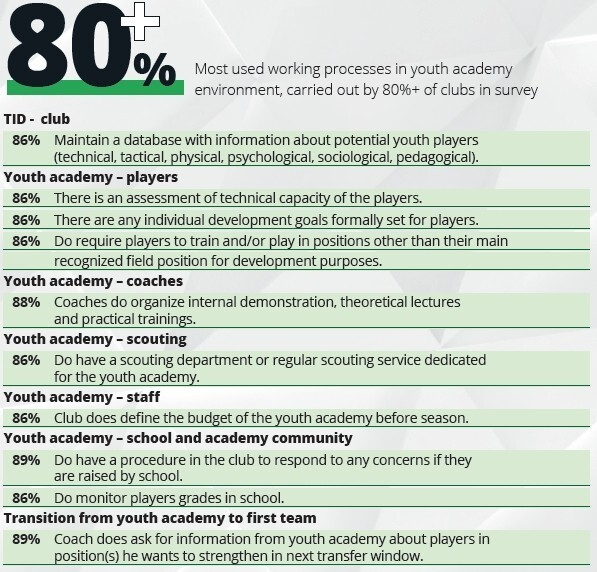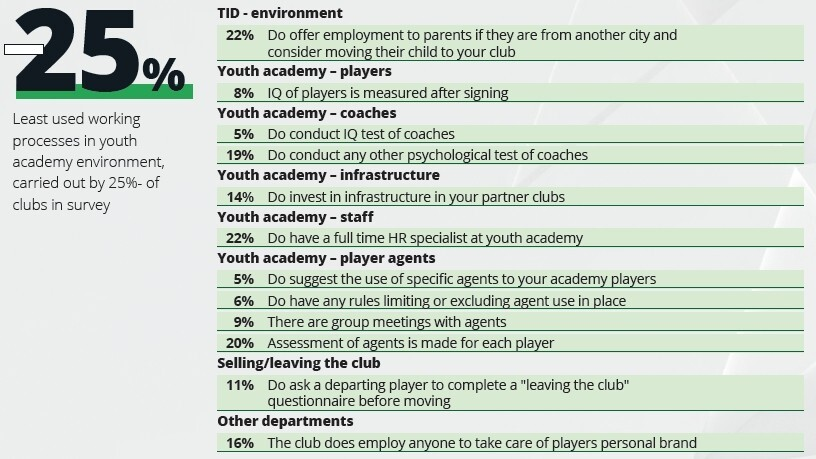First, I suggest you to read ECA research on Youth academies available on https://lnkd.in/eQh69vNt. Here are a few tips on how to use this publication:
1. Go through the list of working processes used in the survey and see if you find any working process on the list interesting for you and are willing to work on its implementation (feel free to contact me for a list of working processes if you haven’t saved them from survey)
2. Go through lists of most used working processes and see if you have all of them (pages 60-61)
3. Go through the list of least used working processes and see which you don’t have (pages 62-63)
4. Go through the list of most correlated processes and try to identify causality for correlation and see how those working processes are relevant in your academy (pages 64-67)
5. If you find a specific working process especially interesting to you, feel free to contact me to reach out for the list of working processes it is correlated with.
6. Go through the list of most recognized indicators of successful transition from academy to the first team and cross-check it with your club (pages 70-73).
Most and least used working processes in academies.
What do academies across Europe do most often? What is a “must” to have. On the other side what are the least number of working processes academies are doing. Most used working processes are observed in two margins: those which are used in more than 90% of academies and those which are used between 80% and 90% of academies. Least used working processes are observed in margin of less than 25%.
Areas of working processes are following ones:
Talent identification
› Environment perspective
› Club perspective
Youth academy
› Playing style
› Players
› Coaches
› Teams
› Scouting
› Sale of players
› Infrastructure
› Staff
› Parents
› Player agents
› School and academy community
Transition from youth academy to first team
Selling/leaving the club
Other departments
Decision making

It is obvious that most used working processes are related to talent identification from perspective of environment of player in TID. On the same level are working processes related to playing style in academies. Among these processes areas it is recognized that strong focus are on human capital and cognitive care.
To see dynamic, we have made an analysis of margin 80-90%.

In this margin we can see that dynamic of change is happening and more focus is on area related to relations with players. Better said there is focus on individual development of each player. This area is followed by relations with and school and academic institutions. Besides player, areas of “coach”, “staff, “school and academy community”, “TID-club” and “transition from youth academy to the first team” are represented in both of most used margins. Areas related to the environment of players in processes related to talent identification are lost as well as working processes related to playing style and relations with parents.

Most leased used working processes in research made are related to player agents as I have already written in prior articles. Processes related to cognitive care are well presented starting from measuring IQ of players and coaches but also other cognitive care processes. Personal brand of players is still not well recognized as topic important for development of young players. Also, questionnaire before leaving the club as much as it seems easy to do, is done in very few clubs across Europe. Still, one should think are there some new insights hidden which can be easily reached.
Only working areas which are represented in all three analyzed margins are: “players”, “coaches” and “staff”. Those working areas and processes within them could be understood as core of academy.